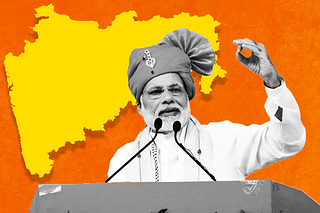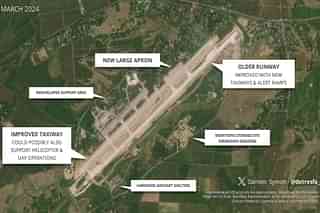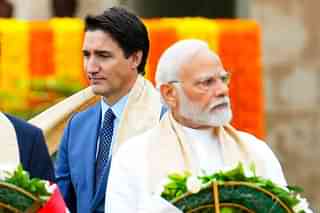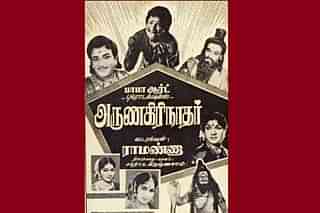Economy
A Last Pause Before The RBI Begins To Increase Interest Rates
K Srinivasa Rao
Feb 13, 2018, 12:29 PM | Updated 12:28 PM IST
Save & read from anywhere!
Bookmark stories for easy access on any device or the Swarajya app.
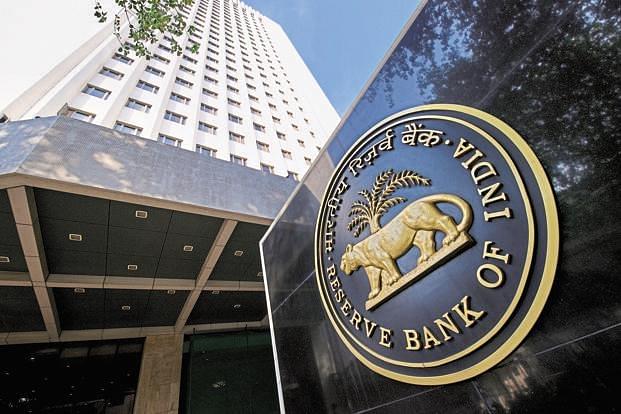
In line with market expectations, Reserve Bank of India (RBI) in its sixth bimonthly monetary policy review has kept the repo rates intact at 6 per cent, the lowest level since November 2010. But it seems to be the last pause before RBI begins to increase repo rates in the current cycle. The forward guidance is an upward shift in interest rates. The fact that out of the six members of the Monetary Policy Committee (MPC), one member has voted for rate hike is a muted acknowledgement of evolving market dynamics.
Considering the emerging macroeconomic situation, gross value added (GVA) growth during financial year 2019 (FY19) is projected at 7.2 per cent. First and second half of FY19 may range from 7.3 per cent to 7.4 per cent and 7.1 per cent to 7.2 per cent respectively with downside risks. But with formal economy and tax base on expansion mode and upside investment and capex sentiments, the economy can move in line with positive outlook of International Monetary Fund (7.4 per cent) and World Bank (7.3 per cent).
1. Inflation Outlook
RBI firm in its inflation management strategy is expecting inflation to stay within a range of 4.3 to 4.7 per cent in the second half of FY18. But it has revised its projection now to reach 5.1 per cent in the fourth quarter. It can hover in the range of 5.1 to 5.6 per cent in the first half of FY19. The upside risk is inherent in rising crude oil prices, increased house rent allowances released to government employees under Seventh Central Pay Commission (CPC) and interdependent factors can push Consumer Price Index (CPI).
The increased minimum support price (MSP), the fiscal slippage with deficit pegged at 3.5 per cent instead of 3.3 per cent and hike in customs duties on certain items recently announced in Union budget can have upside risk to inflation. Moreover, the marginal breach of fiscal deficit target of 3.3 per cent by 20 basis points may also have its own implications. Capping inflation spiral will call for close monitoring of price line and tackling demand and supply side dynamics.
2. Better Asset Quality
With use of Insolvency and Bankruptcy Code (IBC) in close to 96 borrower accounts admitted so far by National Company Law Tribunal (NCLT), the debt resolution process is expected to accelerate to provide some respite to banks in managing bad loans. Recent relaxation to provide additional 180 days’ time for micro, small and medium enterprises (MSME) units in classification of non-performing assets (NPAs) may temporarily improve asset quality. But by then the recovery climate is expected to improve. Consequently, MSME loans standard as on 31 August 2017 will now be classified as sub standard only after 270 days. The credit limit cap of Rs 5 and Rs 10 crore for service sector MSME units is also removed. The reduction of corporate tax to 25 per cent from 30 per cent proposed in Union budget for entities having turnover of up to Rs 250 crore up from Rs 50 crore can put many of the MSMEs in a good stead.
3. Regulatory Changes In Lending Rates
Further, in order to provide a level-playing field, the sub target of 8 per cent of adjusted net bank credit (ANBC) or credit equivalent amount of off-balance sheet exposure (CEOBE) whichever is higher will now be applicable to all foreign banks having 20 or more branches in India. It will thus be mandatory for such foreign banks to comply with priority sector lending norms with its sub targets to small and marginal farmers and MSME sector like domestic banks.
The harmonisation of benchmark lending rates by aligning base rate computation methodology on the lines of marginal cost of funds based lending rate (MCLR) shall bring parity between pricing to old and new borrowers. The collective impact of such seminal developmental and regulatory changes will increase flow of credit while rationalising pricing of loan products. With burden of NPA management easing due to improved familiarisation with IBC-2016 and utility of its amendments, the focus of banks can now shift to improve the credit flow to MSME and other productive sectors.
4. Revival Of Demand For Credit
During the fiscal, credit growth of banks is maintained in double digit at 10.6 per cent (year on year up to the fortnight ending 19 January) compared to 4.7 per cent last year. As against it, the position is reversed in deposits. They grew by 5.1 per cent as against 13.3 per cent last year causing pressure on bank resources. The fact that some of the banks have already started increasing interest rates on deposits is a clear inkling of a move towards upward shift in interest rates.
Moreover, massive capital infusion of Rs 80,000 crore through recapitalisation bonds and incremental rise in deposits at enhanced interest rates, banks can get more lending space. The current neutral liquidity position may soon turn deficit with credit pick up. In order to maintain equilibrium in interbank call rates close to repo rate, RBI has assigned increased institutional role to Financial Benchmark India Private Limited to develop a market driven reference rates for call money and spot rates for key foreign currencies.
In the league of regulatory changes meant to create ease in credit flow, banks can now focus on lending to core sectors – agriculture, MSME and small business that are badly affected by demonetisation and goods and services tax. Though repo rates are retained at same level, all the indications point towards hike in interest rates in coming quarters. But banks must take advantage of the surge in demand for credit to restore their relevance so that rising role of non-banking financial companies can be effectively challenged.
Save & read from anywhere!
Bookmark stories for easy access on any device or the Swarajya app.
K Srinivasa Rao is Adjunct Professor, Institute of Insurance and Risk Management – IIRM. The views expressed are his own.
Introducing ElectionsHQ + 50 Ground Reports Project
The 2024 elections might seem easy to guess, but there are some important questions that shouldn't be missed.
Do freebies still sway voters? Do people prioritise infrastructure when voting? How will Punjab vote?
The answers to these questions provide great insights into where we, as a country, are headed in the years to come.
Swarajya is starting a project with an aim to do 50 solid ground stories and a smart commentary service on WhatsApp, a one-of-a-kind. We'd love your support during this election season.
Click below to contribute.

